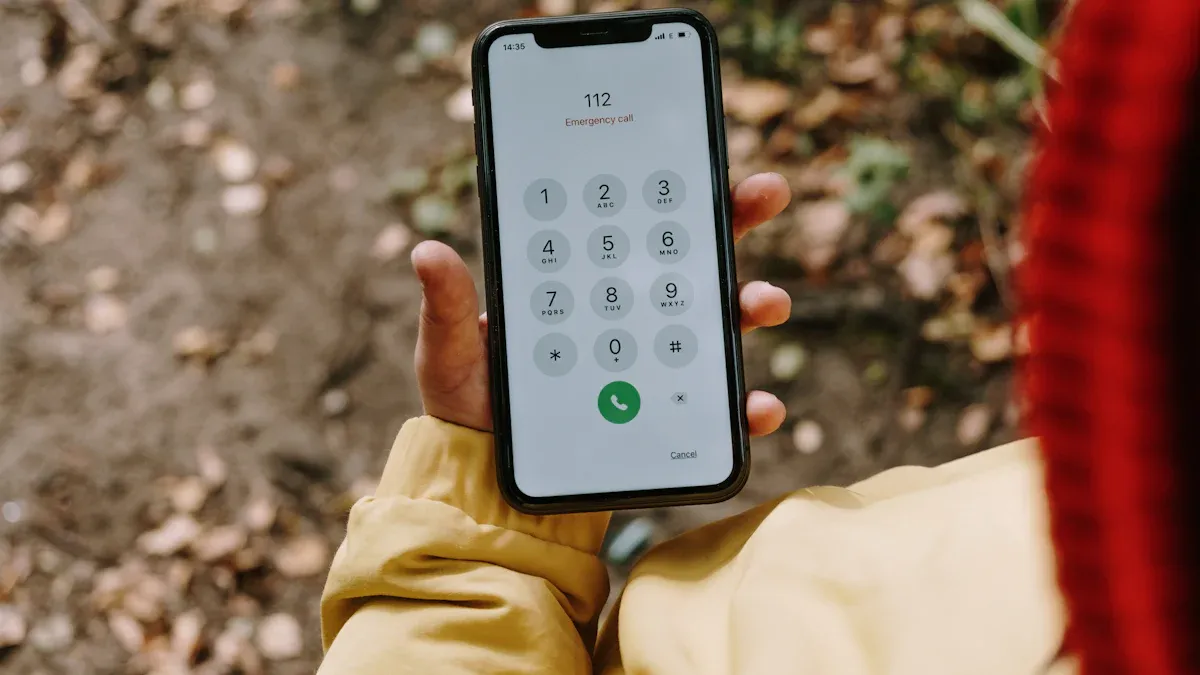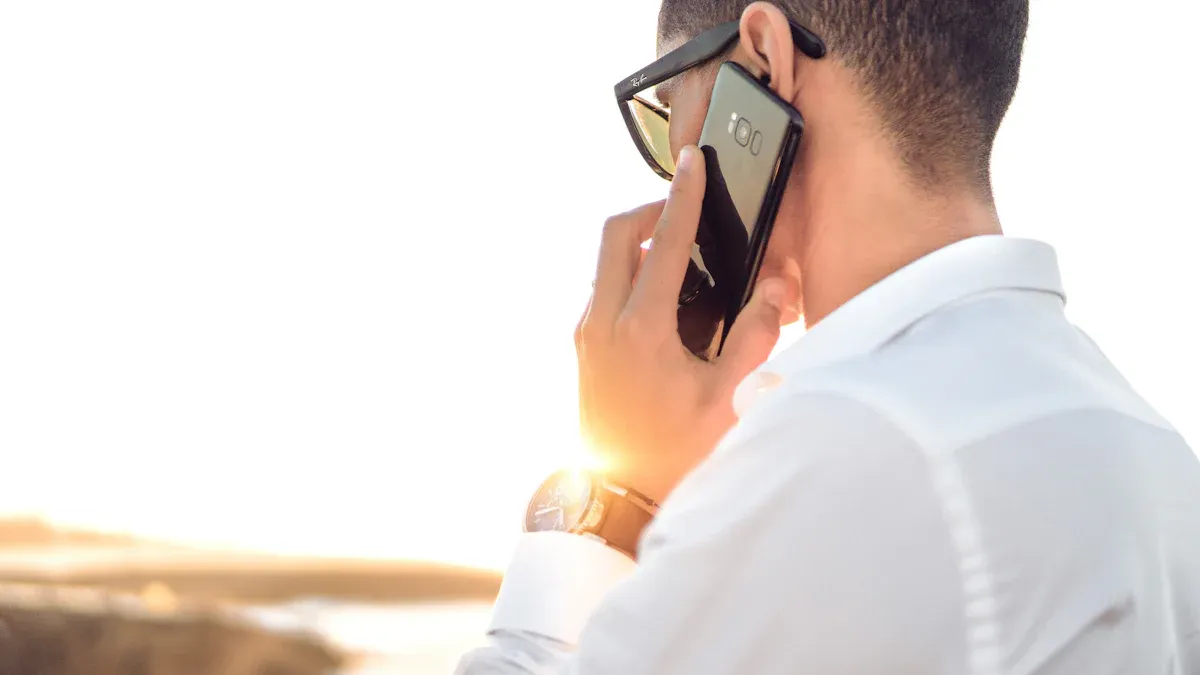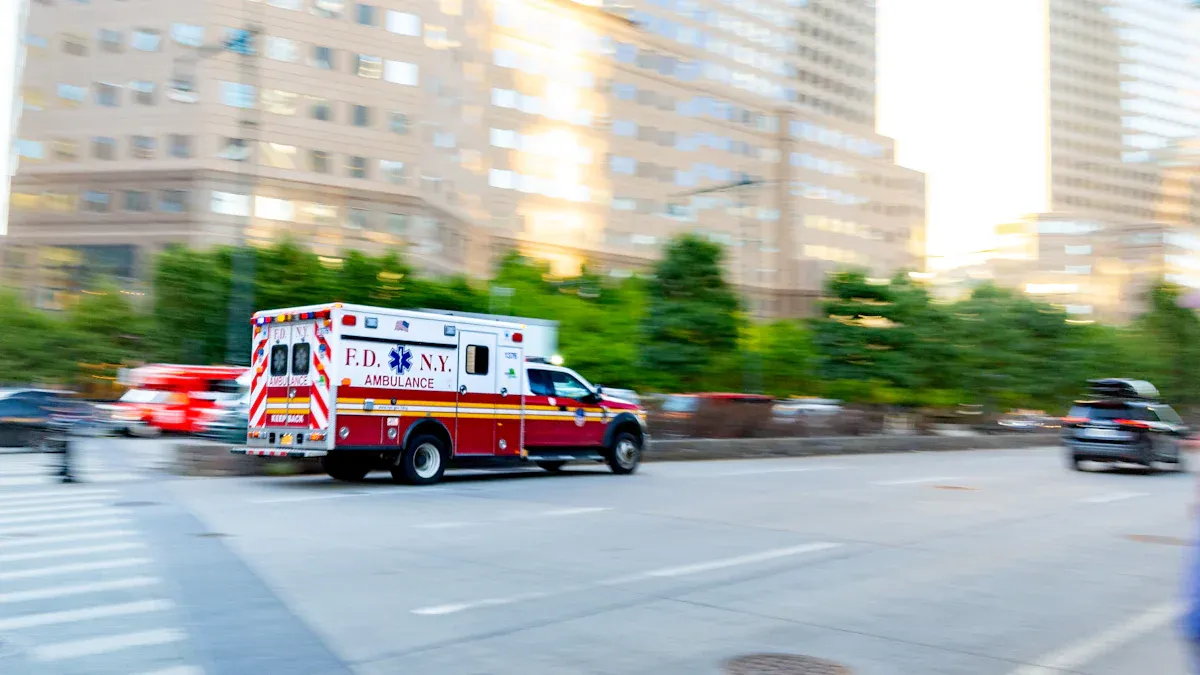
When a traffic emergency happens, quick action can save lives. Many rely on a Téléphone d'urgence du trafic ou même rugged emergency telephone to call for help. Delays can lead to more accidents and congestion. They should always use an industrial Heavy Duty telephone or call 911 for rapid assistance.
Studies show that secondary crashes make up nearly 18% of all incidents, and confusion at the scene causes even more delays.
Steps to Use a Traffic Emergency Telephone

Assess Your Safety and Situation
Before reaching for a traffic emergency Telephone, people need to check their surroundings. Safety comes first. If the car is in a dangerous spot, like the middle of a busy highway, everyone should move to a safer area if possible. Sometimes, bystanders hesitate to help because they worry about their own safety. This is called the “bystander calculus.” People weigh the risks and benefits before acting. In severe emergencies, emotions run high, but personal risk can still stop someone from helping.
Tip: Always look for oncoming traffic, fire, or leaking fuel before leaving the vehicle. If it feels unsafe, stay inside with seatbelts fastened and call for help.
Emergency dispatchers depend on clear descriptions from callers. They cannot see the scene, so sharing details about the surroundings helps them send the right help faster.
- Check for immediate dangers (traffic, fire, smoke).
- Move to a safe location if possible.
- Stay calm and prepare to describe the situation clearly.
Who to Call: 911, Roadside Assistance, or State Services
Choosing the right number to call can make a big difference. A Téléphone d'urgence du trafic often connects directly to highway patrol or emergency services. In most cases, 911 is the best choice for crashes, injuries, or dangerous situations. For flat tires or minor breakdowns, roadside assistance or state services may be more helpful.
- 911: Use for accidents, injuries, or if someone is in danger.
- Roadside Assistance: Call for flat tires, dead batteries, or when the car is not blocking traffic.
- State Services: Some highways have special numbers or traffic emergency Telephone boxes that connect to local help.
Statistics show that traffic and transportation incident calls make up about 12.7% of all emergency calls at some U.S. dispatch centers. This makes it one of the top five reasons people use emergency phones. However, not every crash gets reported to 911, and sometimes police reports do not match the number of calls. Some people leave the scene or refuse help, so the real number of emergencies is even higher.
What Information to Provide When Calling
When using a traffic emergency Telephone, clear and accurate information helps responders arrive faster. Location is the most important detail. Newer systems use GPS, but accuracy can still vary. For example, some carriers can pinpoint a caller within 46 feet, while others may be off by over 300 feet. Giving a clear description of landmarks, mile markers, or road signs helps a lot.
- State your exact location (highway name, nearest exit, mile marker).
- Describe the situation (number of vehicles, injuries, hazards).
- Share any medical conditions or special needs.
- Stay on the line until the dispatcher says it is okay to hang up.
Studies show that accurate information exchange during emergency calls can reduce response times and improve outcomes. Dispatchers use the details to set priorities and send the right help. If callers are upset or unclear, it can slow things down. Next Generation 911 systems now allow sharing of medical info and even live video, which helps responders prepare before they arrive.
Note: The faster and clearer the information, the quicker help will arrive. Even a one-minute improvement in response time can save thousands of lives each year.
Making Yourself and Your Vehicle Visible
After calling for help with a traffic emergency Telephone, making the vehicle visible is key to preventing more accidents. Visibility helps other drivers see the stopped car and avoid it. Experts recommend using hazard lights, reflective triangles, or flares if it is safe to do so.
La recherche montre que certain colors and lighting patterns make vehicles easier to spot. Red and blue lights are most visible, but red lights cause less glare at night. Flashing patterns like “high/low” or synchronized lights reduce confusion for other drivers. Reflective markings help, but too much brightness can sometimes make it harder for drivers to see people on foot.
- Turn on hazard lights right away.
- Place reflective triangles or flares behind the car if safe.
- Wear a reflective vest if you need to leave the vehicle.
- At night, use lower-intensity lights to reduce glare.
Safety Tip: Stay away from traffic lanes and stand behind guardrails if possible. Never turn your back to oncoming cars.
While there is no direct proof that these steps always prevent secondary crashes, experts agree that better visibility lowers the risk. Following these steps after using a traffic emergency Telephone can keep everyone safer until help arrives.
Staying Safe While Waiting for Help

Safety on Highways and Busy Roads
Staying safe on highways means more than just pulling over. Drivers and passengers should move away from traffic if possible. Standing behind guardrails or far from moving cars lowers the risk of injury. Research shows that clear roles and proactive safety actions help reduce near misses and secondary incidents. People who know what to do and act quickly often avoid extra accidents. Safety is not just about following rules. It is about understanding the situation and making smart choices.
Nighttime and Severe Weather Precautions
Night or bad weather can make emergencies even harder. Drivers should slow down and leave more space between cars on wet or icy roads. They should never drive through flooded areas. Low visibility means everyone must watch for people walking or biking. Planning ahead helps, too. Checking road conditions and packing emergency kits with blankets and charged phones can save lives. Studies show that rain and snow slow traffic and cause more crashes. About 10% of injury accidents happen in bad weather, so extra care is needed.
Remote Areas and Limited Cell Service
Emergencies in rural places bring new challenges. Cell phone signals may not work well, making it hard to call for help. This can delay rescue teams and make it tough to warn others. In some cases, even doctors and nurses have trouble talking to each other. People in remote areas should carry backup chargers, paper maps, and let someone know their travel plans.
Health Emergencies and Accidents
Some emergencies need special care. Quick action and clear priorities can save lives, especially in cases like heart attacks or serious injuries. Studies show that faster response times lead to better survival rates. Emergency teams with special training handle these cases best. People should follow instructions from dispatchers and share any health problems right away. This helps responders give the right care as soon as they arrive.
Knowing how to use a Téléphone d'urgence du trafic can save lives. People who stay calm and ready handle emergencies better. They should check their emergency kits often. A little planning helps everyone feel safer on the road. Remember, quick action and clear thinking make a big difference.
FAQ
What should someone do if their phone battery dies during a traffic emergency?
They can look for a nearby emergency telephone. Many highways have phones or call boxes. A passing driver may also help by calling for assistance.
Can a person use a traffic emergency telephone for non-emergencies?
No, they should only use it for real emergencies. Using it for minor issues can delay help for people who need it most.
How can someone stay calm while waiting for help?
Tip: Take deep breaths. Focus on safety steps. Remind everyone that help is on the way. Staying calm helps everyone think clearly.


